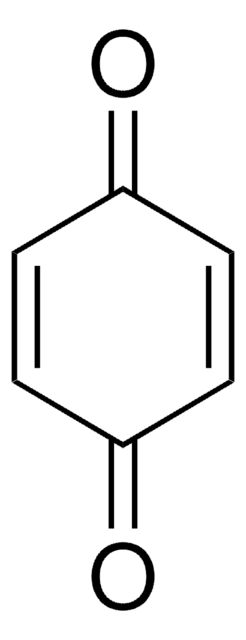30755
Perchloric acid
puriss. p.a., ACS reagent, reag. ISO, reag. Ph. Eur., 70.0-72.0%
Synonym(s):
PCA
About This Item
Recommended Products
grade
ACS reagent
puriss. p.a.
Agency
USP/NF
reag. ISO
reag. Ph. Eur.
Assay
70.0-72.0%
form
liquid
impurities
≤0.00005% free chlorine (Cl)
≤0.0001% heavy metals (as Pb)
≤0.001% total nitrogen (N)
ign. residue
≤0.003% (as SO4)
density
1.670 g/cm3
anion traces
chlorate (ClO3-): ≤10 mg/kg
chloride (Cl-): ≤3 mg/kg
phosphate, silicate (as SiO2): ≤5 mg/kg
sulfate (SO42-): ≤10 mg/kg
cation traces
Ag: ≤0.1 mg/kg
Al: ≤0.05 mg/kg
As: ≤0.05 mg/kg
Ba: ≤0.02 mg/kg
Be: ≤0.02 mg/kg
Bi: ≤0.1 mg/kg
Ca: ≤0.5 mg/kg
Cd: ≤0.05 mg/kg
Co: ≤0.05 mg/kg
Cu: ≤0.1 mg/kg
Fe: ≤1 mg/kg
Ge: ≤0.05 mg/kg
K: ≤0.1 mg/kg
Li: ≤0.02 mg/kg
Mg: ≤0.5 mg/kg
Mn: ≤0.02 mg/kg
Mo: ≤0.05 mg/kg
Ni: ≤0.1 mg/kg
Pb: ≤0.05 mg/kg
Sr: ≤0.02 mg/kg
Ti: ≤0.1 mg/kg
Tl: ≤0.05 mg/kg
V: ≤0.05 mg/kg
Zn: ≤0.1 mg/kg
Zr: ≤0.1 mg/kg
SMILES string
OCl(=O)(=O)=O
InChI
1S/ClHO4/c2-1(3,4)5/h(H,2,3,4,5)
InChI key
VLTRZXGMWDSKGL-UHFFFAOYSA-N
Looking for similar products? Visit Product Comparison Guide
Related Categories
General description
Application
- In the synthesis of graphite oxide via electrochemical oxidation of natural graphite.
- As a reaction medium in oxidations reactions.
- As a dopant in the preparation of perchloric acid-functionalized polyaniline (HClO4/PANI) catalyst for the synthesis of 2-substituted benzothiazoles by condensation reaction between o-aminothiophenol with aldehydes.
It can also be used in the following:
- Silica-supported perchloric acid (HClO4-SiO2) is used as a catalyst to synthesize amidoalkyl naphthols by the condensation reaction of 2-naphthol, aromatic aldehydes, and acetonitrile.
- HClO4-SiO2 is used in the Friedlander quinoline synthesis by the condensation reaction of 2-aminoaryl ketones and carbonyl compounds.
- Alumina-supported perchloric acid (Al2O3-HClO4) is used as a catalyst in the synthesis of α-(α-amidobenzyl)-β-naphthols.
Signal Word
Danger
Hazard Statements
Precautionary Statements
Hazard Classifications
Acute Tox. 4 Oral - Eye Dam. 1 - Met. Corr. 1 - Ox. Liq. 1 - Skin Corr. 1A - STOT RE 2
Target Organs
Thyroid
Storage Class Code
5.1A - Strongly oxidizing hazardous materials
WGK
WGK 1
Flash Point(F)
Not applicable
Flash Point(C)
Not applicable
Choose from one of the most recent versions:
Already Own This Product?
Find documentation for the products that you have recently purchased in the Document Library.
Customers Also Viewed
Articles
Using an Ascentis® Express F5 HPLC column, this study separates 11 β-agonists in pork by LC-MS/MS in under 8 minutes with excellent recovery and precision.
Our team of scientists has experience in all areas of research including Life Science, Material Science, Chemical Synthesis, Chromatography, Analytical and many others.
Contact Technical Service





